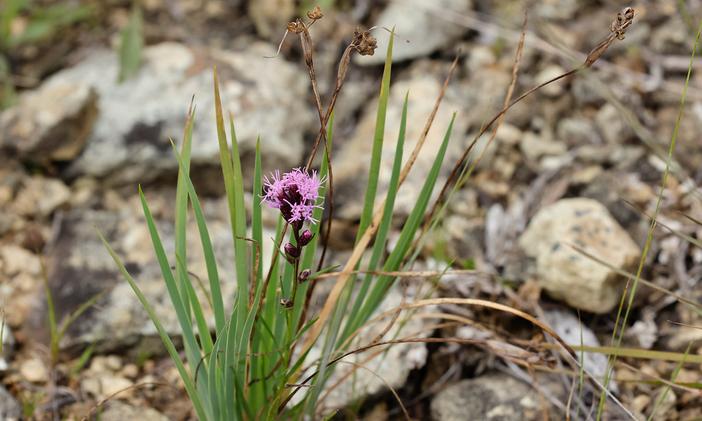Needletip Blue-Eyed Grass
(Sisyrinchium mucronatum)
Needletip Blue-Eyed Grass (Sisyrinchium mucronatum)
/
/

Lydia Fravel
CC BY 2.0











Estimated Native Range
Summary
Needletip Blue-Eyed Grass is valued for its delicate flowers and grassy foliage, which add texture and color to garden settings. It is often used in rock gardens, border fronts, and wildflower meadows. It is relatively low-maintenance, requiring medium amounts of water and thriving in soils with medium drainage. It prefers full sun but can tolerate light shade. While generally pest-free, it can suffer from rust or root rot if conditions are too wet. It is not known to be invasive and does not have aggressive roots, making it a safe choice for most garden settings.CC BY-SA 4.0
Plant Description
- Plant Type: Herb
- Height: 0.5-2 feet
- Width: 0.5-0.7 feet
- Growth Rate: Moderate
- Flower Color: Blue, Purple
- Flowering Season: Spring, Summer
- Leaf Retention: Deciduous
Growth Requirements
- Sun: Full Sun
- Water: Medium
- Drainage: Medium
Common Uses
Bee Garden, Bird Garden, Butterfly Garden, Deer Resistant, Low Maintenance, Rabbit Resistant, Showy Flowers
Natural Habitat
Native to moist meadows, grasslands, and open woods
Other Names
Common Names: Michaux’s Blue-Eyed-Grass , Eastern Blue-Eyed-Grass , Mucronate Blue-Eyed-Grass , Narrow-Leaved Blue-Eyed Grass , Needle-Tip Blue-Eyed-Grass , Bermudienne Grêle , Bermudienne Mucronée
Scientific Names: Sisyrinchium mucronatum , Sisyrinchium intermedium , Sisyrinchium mucronatum var. mucronatum , Sisyrinchium versicolor , Sisyrinchium bermudiana var. mucronatum , Bermudiana bermudiana var. mucronatum , Bermudiana mucronata , Sisyrinchium angustifolium var. mucronatum , Sisyrinchium bermudiana f. mucronatum
GBIF Accepted Name: Sisyrinchium mucronatum Michx.